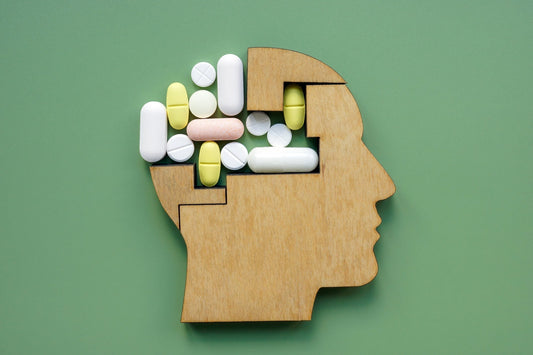As parents and educators, we all know the brain is crucial to who we are, but recent research has unveiled just how important it is—especially during early childhood. Understanding the complexities of a child’s developing brain can help you support their cognitive, emotional, and social growth.

Here are five critical facts about your elementary student’s developing brain, paired with practical Brain Hacks that will help you support their development at home.
1. The Brain Prunes Itself Early
One of the most fascinating aspects of early childhood brain development is the pruning process, which begins soon after birth. Babies are born with more neurons and connections than they will ever need. This overabundance provides a wide array of possibilities for learning. As children are exposed to different experiences, the brain prunes away unused connections, refining and strengthening the ones that matter most.
This means early experiences have a significant impact on which pathways are retained. Children who are exposed to music, multiple languages, and complex cognitive tasks like puzzles or problem-solving games build richer neural connections. However, balance is key—overloading them with too many activities can backfire, leading to overstimulation. Encouraging your child to pursue hobbies like learning an instrument or playing brain-healthy sports promotes stronger brain development.
Brain Hack: Encourage your child to learn a new skill for 15 minutes a day. This could be a musical instrument, a new language, or even coding. Small, consistent efforts strengthen the neural connections that promote lifelong learning and memory.
2. The Brain Develops Back to Front
The brain does not develop all at once. It grows in stages, from the back of the brain (the cerebellum, which controls movement and coordination) to the front (the prefrontal cortex, responsible for decision-making and impulse control). This is why young children first learn to walk and coordinate their bodies before they master more complex cognitive tasks like planning or managing emotions.
For elementary students, this means that tasks requiring judgment, attention, and focus—things the prefrontal cortex handles—are still in progress. When a child struggles to control their emotions or make good decisions, it’s not a sign of defiance or bad behavior, but rather a reflection of their developing brain. Parents can help by setting appropriate boundaries, offering guidance, and understanding that children need time to grow into these skills.
Brain Hack: Practice decision-making at home. Give your child two choices, like what to eat for dinner or what activity to do after school. The act of choosing builds decision-making pathways in the brain, helping them develop their prefrontal cortex over time.
3. The Prefrontal Cortex Develops Last
The prefrontal cortex, often called the “boss” of the brain, controls high-level functions like planning, organization, empathy, and decision-making. Unfortunately for parents and teachers, this part of the brain doesn’t fully mature until the mid-20s! This means that children, especially those in elementary school, simply don’t have full access to the cognitive tools that adults use daily.
It’s common to expect kids to “think before they act” or “plan ahead,” but their brains aren’t wired to do that yet. By acting as a stand-in prefrontal cortex—helping them plan, make decisions, and reflect on their actions—you can guide them toward better choices. Be patient, set clear expectations, and teach them the steps they can follow to improve their decision-making skills over time.
Brain Hack: Use a “Pause and Reflect” moment with your child. When they act impulsively, calmly ask them to pause and talk through what just happened. Ask questions like, “What do you think happened?” and “What could you do differently next time?” This helps them develop self-awareness and learn from their actions.
4. Children Are Vulnerable to Automatic Negative Thoughts (ANTs)
Children’s brains are just as susceptible to Automatic Negative Thoughts (ANTs) as adult brains. These ANTs can include thoughts like, “Nobody likes me,” “I’m not good at this,” or “This is too hard.” Without intervention, these thoughts can impact self-esteem, mental health, and academic performance.
As adults, we know how to talk back to these negative thoughts, but children need guidance. Teaching kids to challenge their ANTs with questions like, “Is this really true?” or “What evidence do I have for this thought?” helps them learn to manage anxiety and boost their confidence. Encourage your child to express their worries and guide them through the process of rethinking these unhelpful patterns.
Brain Hack: Introduce a "Thought Jar" at home. Each week, ask your child to write down a negative thought they've had, then discuss it together. Work through whether the thought is true or exaggerated, and replace it with a more positive or realistic one. This teaches children how to identify and challenge their ANTs.
5. Every Child’s Brain Is Unique
Just like fingerprints, every child’s brain is unique. The rate at which a child develops cognitive and emotional skills varies, meaning that no two children will learn or grow at the same pace. Some may excel at math but struggle with reading, while others might be gifted in art or music.
It’s easy to fall into the comparison trap, especially in today’s achievement-oriented world, but it’s important to remember that differences in development are normal. Whether your child is an early reader or struggles with social skills, celebrate their unique strengths and support their individual challenges. Encouraging a love of learning and self-confidence is far more important than chasing benchmarks that may not align with their natural development.
Brain Hack: Create a “Strengths Chart” for your child. List their talents and skills, such as being kind, artistic, or good at sports. Each week, add something new they’ve learned or improved on. This visual reminder builds their self-confidence and highlights the importance of personal growth over competition.
Conclusion: Encouraging Healthy Brain Development
The elementary years are a critical period for brain development. By understanding how the brain grows and what children need to thrive, you can play an essential role in shaping your child’s future success. Focus on nurturing their developing skills, provide support where they struggle, and always remember that the brain, while complex, is incredibly adaptable. Positive reinforcement, patience, and mindful parenting will help your child develop the cognitive and emotional tools they need to succeed.
Building a healthy brain isn’t about perfection—it’s about understanding, supporting, and encouraging your child as they grow. The more you understand how their brain works, the better equipped you are to help them thrive. If you are interested in learning more about the developing brain of young elementary students, check out Brain Thrive by 5 at Amen University!
Written By: Jesse J. Payne, Ed.D.
Website: brain25.com
Instagram/TikTok/LinkedIn: @drjessepayne

 Amen University
Amen University








